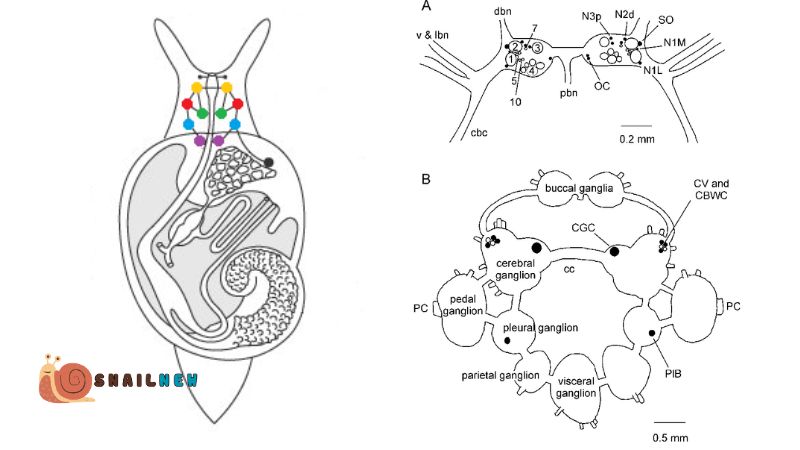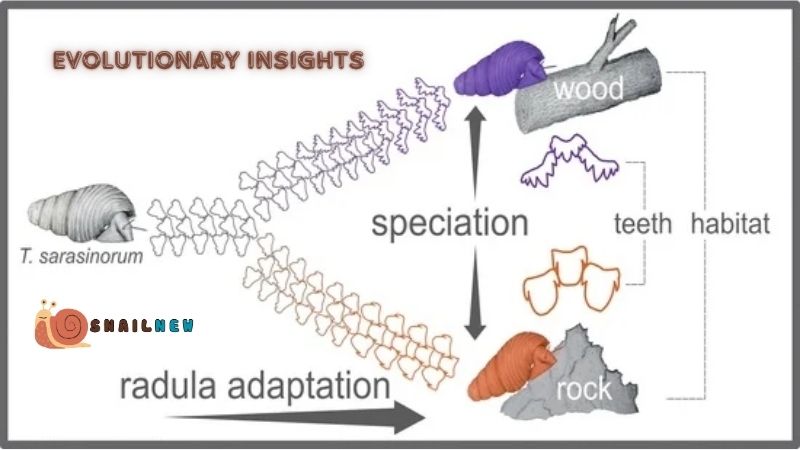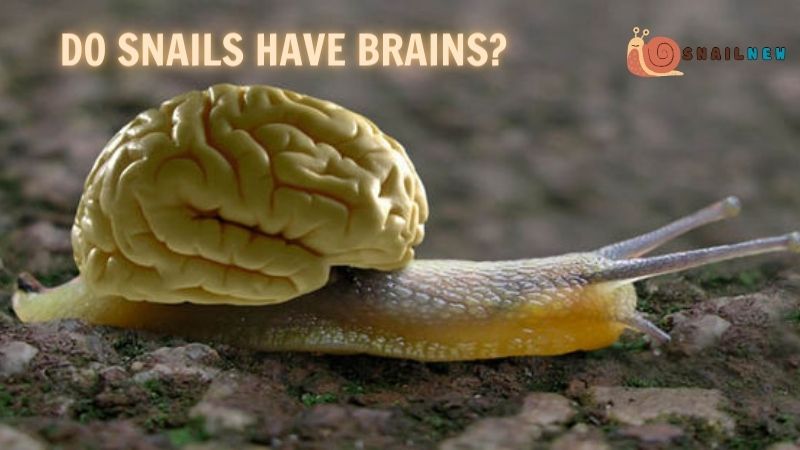Do snails have brains? This seemingly simple question unveils a captivating world of neurobiology within the seemingly mundane realm of these small, slow-moving creatures. While often overlooked, snails possess intricate neural structures that enable them to navigate their environment, find food, and evade predators. In this article, Snailnew delve into the depths of snail neurobiology, exploring the functions and complexities of their brains.
Table of Contents
ToggleUnderstanding the Basics:
First and foremost, let’s address the fundamental query: do snails have brains? The answer is a resounding yes. Snails indeed have brains, albeit of a much simpler nature compared to those of more advanced organisms. Within the confines of their tiny heads lie clusters of nerve cells known as ganglia, serving as the epicenter of neural activity for these gastropods.
Do Snails Have Brains?
The Role of Ganglia:
At the core of snail neurobiology are these ganglia, which act as the command centers for processing sensory information and coordinating motor responses. Do snails have brains? Yes, and it’s within these ganglia that the essence of their neural prowess resides. Through a network of interconnected neurons, ganglia allow snails to perceive their surroundings, react to stimuli, and execute basic behaviors essential for survival.

Sensory Perception:
One of the primary functions of snail brains is sensory perception. Despite their seemingly simplistic anatomy, snails possess a surprising array of sensory organs, including eyespots, tactile receptors, and chemoreceptors. These sensory structures relay information to the ganglia, enabling snails to detect changes in light, temperature, moisture, and chemical gradients in their environment. Through this sensory feedback loop, snails can orient themselves, locate food sources, and assess potential threats.
Motor Coordination:
In addition to sensory perception, snail brains are crucial for motor coordination. Do snails have brains? Yes, and these brains play a vital role in controlling the intricate movements of their muscular foot, which serves as their primary means of locomotion. By processing sensory input and generating motor commands, the ganglia orchestrate the rhythmic contractions of the snail’s foot, allowing it to glide gracefully across surfaces or retreat into its shell at the first sign of danger.
Learning and Memory:
While snails may not possess the cognitive complexity of higher animals, they are capable of learning and memory to a certain extent. Through repeated exposure to stimuli, snails can form associations between specific environmental cues and favorable or unfavorable outcomes. This rudimentary form of learning is facilitated by synaptic plasticity within the neural circuits of their ganglia. Consequently, snails can adapt their behavior based on past experiences, demonstrating a degree of behavioral flexibility that belies their diminutive size.

Social Behavior:
Contrary to popular belief, snails are not solitary creatures but instead engage in a variety of social behaviors, facilitated in part by their brains. Do snails have brains? Yes, and these brains enable them to communicate with conspecifics through chemical signals and tactile interactions. Whether it’s forming mating pairs, aggregating in groups for protection, or engaging in territorial disputes, snails rely on their neural machinery to navigate the intricacies of social interaction.
Ecological Significance:
The existence of snail brains holds profound ecological significance, shaping the interactions between snails and their environment. By influencing their foraging behavior, predator avoidance strategies, and reproductive success, snail brains play a pivotal role in shaping the dynamics of ecosystems. Understanding the neural mechanisms underlying these behaviors is essential for comprehending the broader ecological roles of snails and their impact on ecosystem function.
Evolutionary Insights:
The study of snail brains also provides valuable insights into the evolution of nervous systems across different taxa. While vastly different in complexity from the brains of vertebrates, the neural architecture of snails exhibits remarkable similarities to that of other invertebrates, such as insects and cephalopods. By comparing the neural circuits and molecular mechanisms underlying behavior across diverse animal groups, scientists can unravel the evolutionary origins of cognitive processes and glean insights into the fundamental principles of neural organization.

Biomedical Applications:
Beyond its relevance in basic research, the study of snail brains holds potential applications in various biomedical fields. Certain species of snails, such as the medicinal leech Hirudo medicinalis, have been used in traditional medicine for centuries due to their purported therapeutic properties. Moreover, the simple yet functional neural networks found in snails offer valuable models for studying neurodegenerative diseases, synaptic plasticity, and neural regeneration. By elucidating the molecular and cellular mechanisms governing neural function in snails, researchers may uncover novel strategies for treating neurological disorders in humans.
Conclusion:
In conclusion, the question “do snails have brains?” unveils a rich tapestry of neurobiological complexity within these seemingly unassuming creatures. Through their ganglia-based nervous systems, snails perceive, process, and respond to the world around them, exhibiting a repertoire of behaviors essential for survival. From sensory perception and motor coordination to learning and social interaction, snail brains play multifaceted roles in shaping their ecology and behavior. By unraveling the mysteries of snail neurobiology, scientists gain not only a deeper understanding of these fascinating organisms but also valuable insights into the broader principles of neural organization and evolution.
Related Posts:
- The Eyes of the Unseen: Can Snails See?
- Can Snails Feel Pain? Exploring the Enigmatic Question
- Exploring the Aquatic Realm: Can Snails Breathe Underwater?
- Exploring the Pace of Nature: How Fast Are Snails?
- Do Turtles Eat Snails? Exploring the Dietary Habits…
- Do Snails Have Hearts? Unveiling the Intricacies of…


